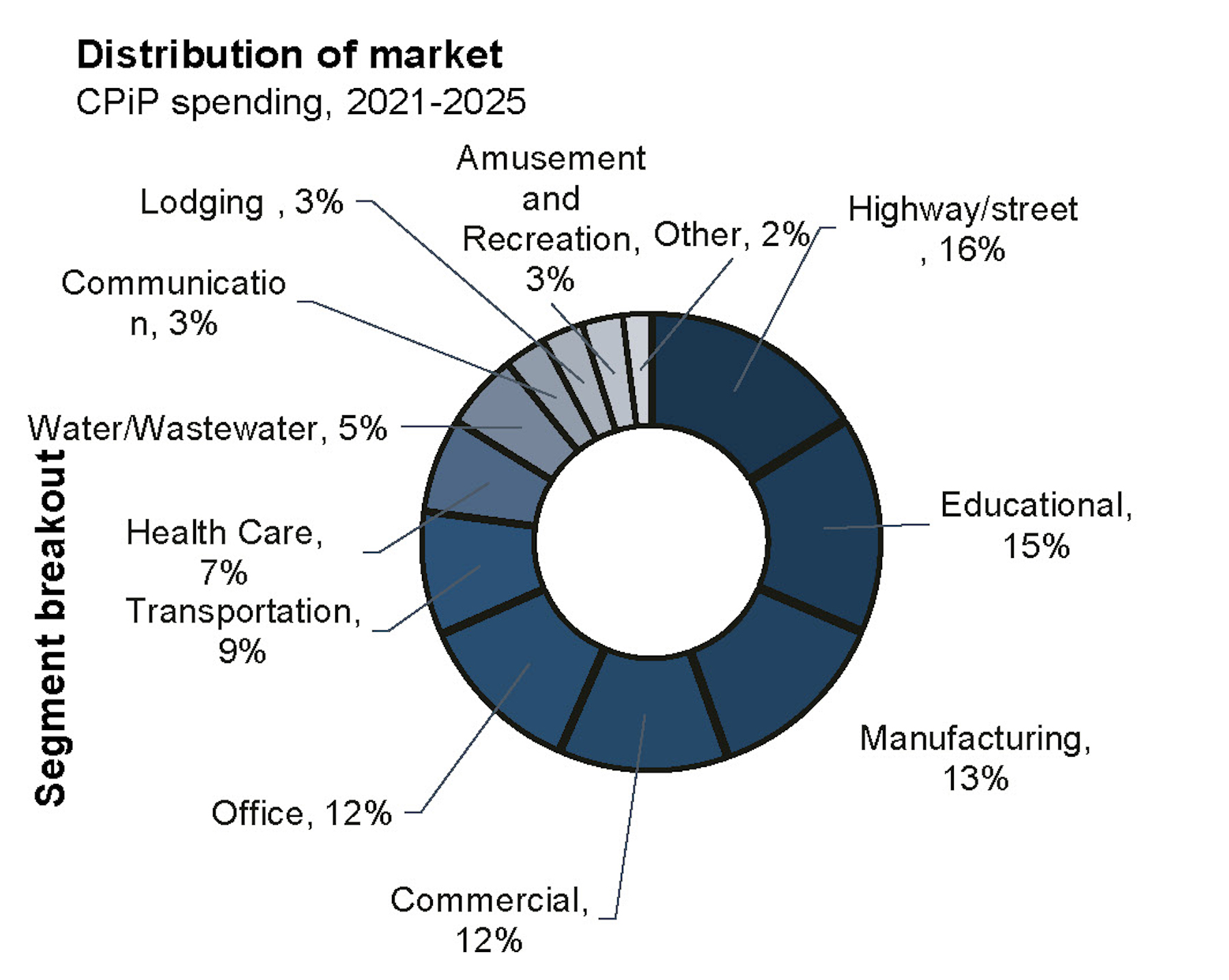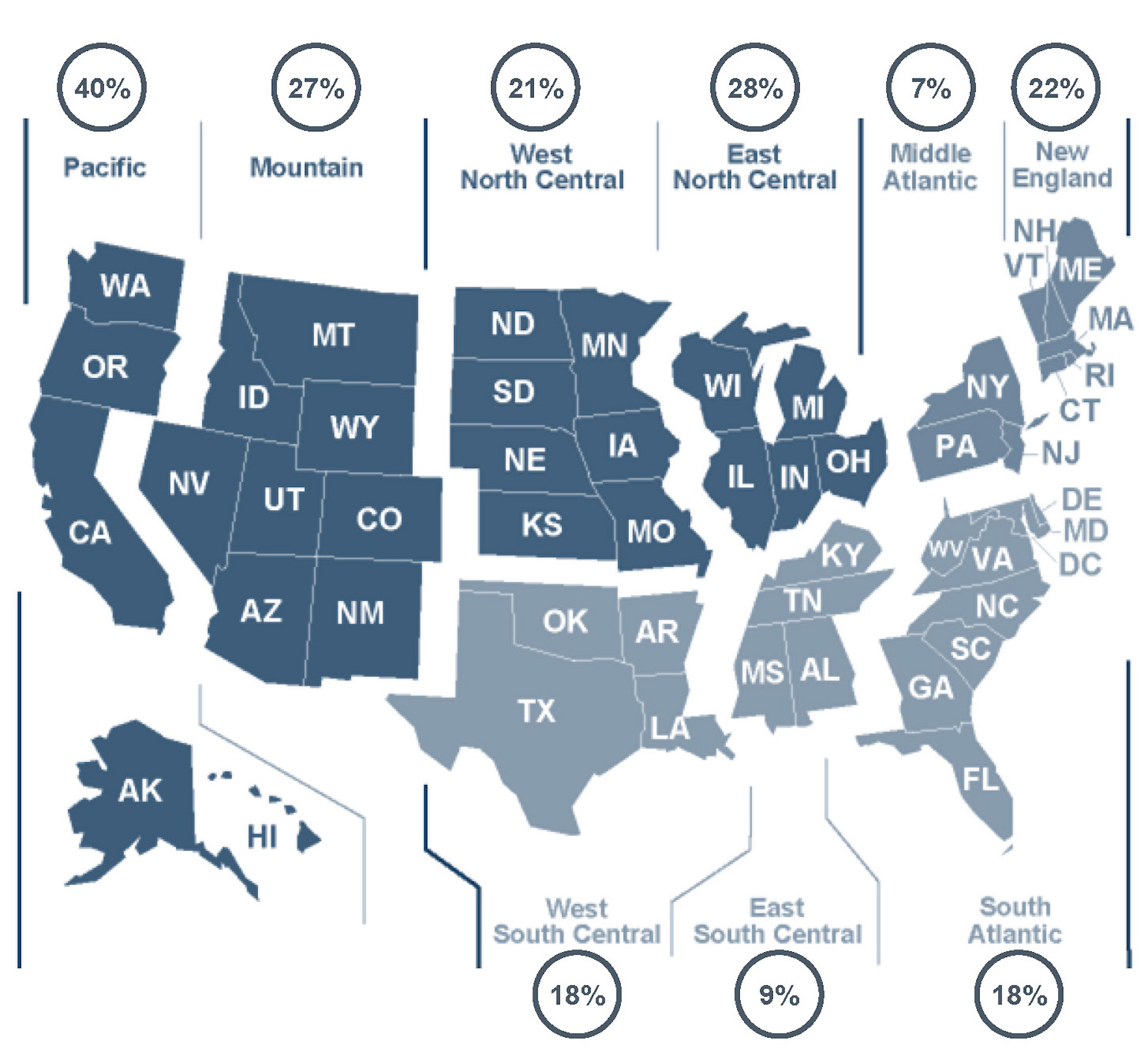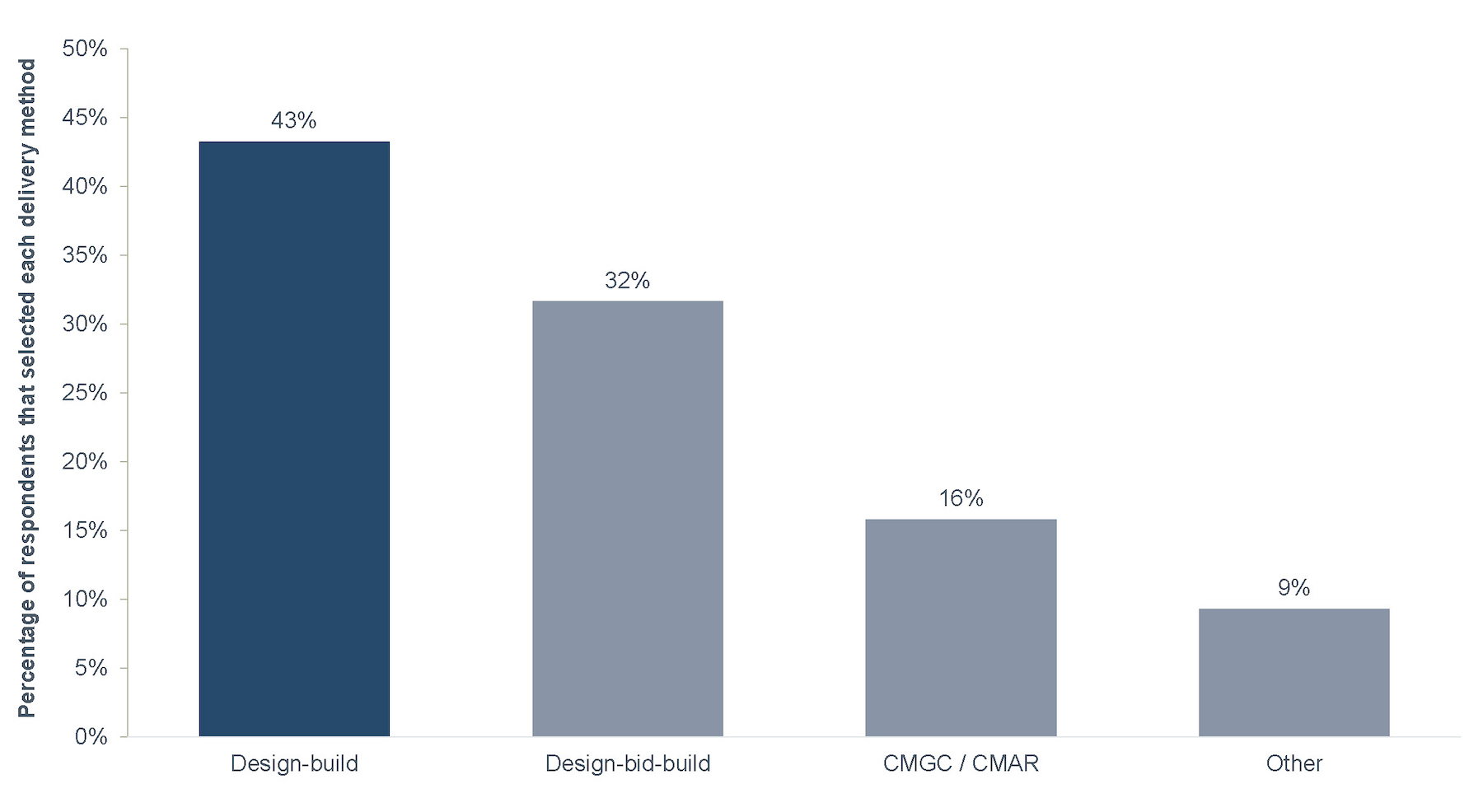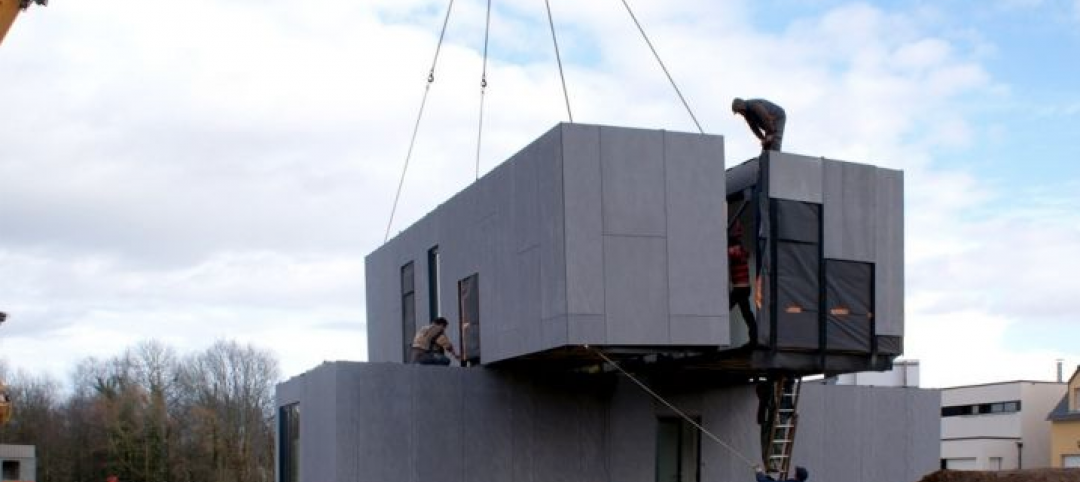FMI’s new analysis of the design-build market forecast for the next fives years shows that this delivery method will continue to grow, despite challenges from the COVID-19 pandemic.
It’s projected that design-build will post a 7.6% annual growth rate during the 2021 to 2025 forecast period and deliver $406 billion in construction in the assessed segments in 2025. FMI envisions 34% total growth in design-build construction spending over that time frame.
Design-Build by Sector and Region

The FMI analysis shows spending in the highway/street (16%), educational (15%) and manufacturing (13%) sectors leading design-build project delivery nationwide.
Regionally, America’s coastal states will continue to represent the largest volume of design-build spending and growth. States in the South Atlantic, West South Central and Pacific census regions lead the nation in both measures.

Why Design-Build?
Owners report that their goals and objectives, followed closely by project complexity, innovation and delivery schedule, are the most influential factors in the project delivery decision. In addition, the growing level of complexity on projects is an increasing factor of influence, particularly as owners look to industry expertise for providing innovative solutions to address the growing demands of projects.
Owners are continuing to experience increasingly expedited schedules, often with fewer in-house resources. Like the 2018 results, market participants consistently identified delivery schedule as a critical factor influencing the selection of delivery methods. They report design-build enables greater team collaboration that produces higher quality results. Design-build teams can identify and better address owners’ goals and objectives by involving key stakeholders early in the process.
Design-Build Success Drives Growth
The FMI analysis reports an increasing number of market stakeholders anticipate design-build to grow over the next five years.
Project success drives that growth. Seventy-seven percent of respondents report very good or excellent design-build project results with a whopping 91% favorable rating overall. In addition, most see design-build as the most commonly used delivery method in their firms over the next five years.
As design-build continues to evolve, so does the need for new data on topics such as the use of progressive design-build, owner advisors and engagement of minority, women and disadvantaged business enterprise (MWDBE) firms.
Progressive Design-Build
FMI found the use of progressive design-build continues to grow, especially in the West. Across regions, stakeholders in the Pacific census region indicated 40% of design-build projects are procured via the progressive approach. In addition, region stakeholders consistently noted that owners are employing progressive design-build at a continually increasing rate, especially in the public building space. Progressive was most often associated with the aviation, water/wastewater and manufacturing sectors and a growing approach for large private organizations.

Owner Advisors
More than 60% of owners employ an owner advisor across each project phase. Market interviews noted that having a clear role definition for the owner advisor in the design-build process was an important success factor. The owner advisor’s role is significant when owners are less familiar with design-build and require additional guidance on effectively managing the design-build process.
Minority, Women and Disadvantaged Business Enterprise (MWDBE) Firms
Respondents believe that design-build encourages greater participation from MWDBE organizations. Involving firms earlier in the process and providing greater flexibility of partner selection fosters increased MWDBE participation. As the construction industry continues to prioritize inclusivity efforts, MWDBE participation will continue to grow, placing design-build in a position to yield the benefits of more inclusive teams continually.

More from Author
FMI | Aug 11, 2022
Commercial Energy Efficiency: Finally “In-the-Money!”
By now, many business leaders are out in front of policymakers on prioritizing the energy transition.
FMI | May 3, 2019
Attracting the next-generation workforce, and no, we don’t mean Millennials
How to reach the next generation of talent to recruit and retain your future leaders.
FMI | Jul 23, 2018
Offsite construction: Why it’s important for the survival of your firm
The industry is approaching its “heart attack moment,” with so many large projects that are chronically late, over budget, and unprofitable, writes FMI Capital Advisors’ Michael Swistun.
FMI | Mar 9, 2017
5 reasons why Millennials are great for the construction industry
Millennials often are unfairly saddled with the dubious reputation for being entitled, disloyal, and self-centered, but it turns out that they are actually not that different from their older work colleagues, according to an FMI study.










